Continuing south, with a detour to explore Ashcroft
On Day 5, April 30th, we made the transition from Late Winter to Spring, from sleet at Clinton to flowers and leafed-out trees from Cache Creek south. The day began with a hike on the Mount Begbie Lookout trail, described in my last post, and a short detour to Ashcroft for a good look at the community turned out to be very enjoyable.
As I neared Clinton at 10:20, we got hit by a storm of strong winds and heavy sleet. That became really funny as I entered Clinton. There on the side of the highway, braced against the storm, a guy was painting a large fence! Now that’s dedication – although I can’t imagine that the paint will stick very well.

The drop in elevation in the 40 km (25 miles) from Clinton to Cache Creek is quite substantial, from 887 meters (2,910 feet) to 396 meters (1,299 feet). That was enough to take us into Spring. It was wo wonderful to see bright green grasses and tree leaves, and lots of flowers.
I was hoping that the visitor centre at Cache Creek would be open, but once again, no luck. There was a fair bit of activity there, though, as it was a polling place for early voting in the provincial election. The results of that could be very interesting, if the comments I see about Premier Christy Clark are an accurate look at the way the province as a whole feels. I decided to leave the motorhome there, unhook the Tracker, and take the dogs to Ashcroft for a proper look.

It’s only about 10 km (6 mi) from Cache Creek to Ashcroft. This is the side road (Hwy 97C) to Ashcroft, looking north, back towards Hwy 97.

As you near Ashcroft, the drop from the highway into the canyon is impressive.

“Welcome to Historic Ashcroft”. I don’t know what the crop in the background is, being grown under little covers.

My first stop was at the historic fire hall, where I met 2 locals planting flowers. They’re both enthusiastic about the Ashcroft area, and Geordie in particular has a wealth of knowledge that he was happy to share a bit of. This firehall, built in 1919, was a replica of the original 1899 fire hall, which was destroyed in a fire in 1916.

One of the sites of interest that the flower-platers were the most enthusiastic was the recently-restored Chinese cemetery, so was my first destination. I recall seeing this long-abandoned and overgrown cemetery decades ago, and it was wonderful to see what’s being done to honour the Chinese community that played such a huge part in building the railway in particular.

At the entrance is the mount for what I expect is an interpretive sign, but it wasn’t installed – in storage for the winter probably. I know the history well enough that it wasn’t a big deal, though.
At the upper end of the cemetery, a meditation chair under a shade tree. The mount for the interpretive sign can be seen behind it.

A small memorial: “In memory of the Chinese workers who helped build the Canadian Pacific Railway in British Columbia”.

“Yong Shi Chang Cun: Live Forever. This mosaic [by Marina Papais] was lovingly created to honour the Chinese culture, and in particular, the Chinese men who were instrumental in the building of the Canadian Pacific Railway between the years 1881-1884.”

Several of the burial plots have elaborate mosaic headstones.

The cemetery was in such bad condition when the restoration began that only a couple of the burial plots have the original markers.

The plaque on the prayer altar reads: “In Victoria, British Columbia, on May 15, 2014, Premier Christy Clark delivered the Legislative Assembly’s apology signifying the deepest regret for the hardship and suffering our past provincial governments imposed on Chinese in British Columbia. The apology recognized the perseverance, grace, and dignity Chinese in British Columbia demonstrated throughout our history while enduring discriminatory historical laws.”

Most of the cemetery is visible in this photo from the prayer altar.
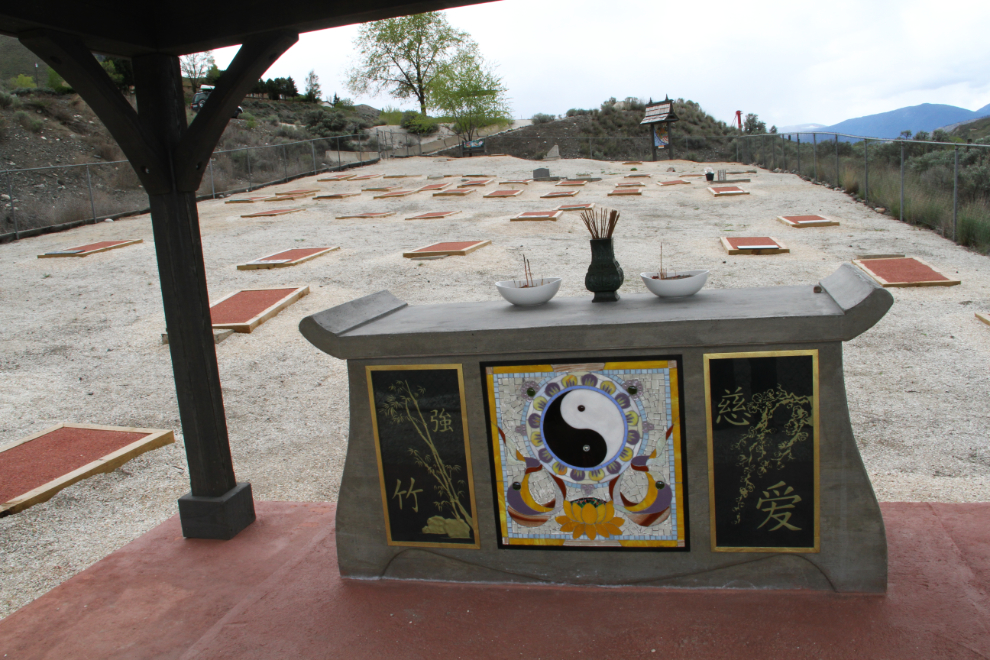
After the cemetery, it was really easy to believe that the other suggestions that I got were also good, so next I started on a tour of the mosaics around town. One of 3 visible from the old fire hall, this one was modelled after a piece by Group of Seven artist A. Y. Jackson, who painted it in Ashcroft in September 1945. A photo of the original work can be seen here at the National Gallery of Canada site.

This mosaic by Marina Papais was inspired by the A. Y. Jackson piece above.

The historic Central Cafe, “established 1920” has closed, despite having “Great Pizza” and the “Best Lunch” 🙁
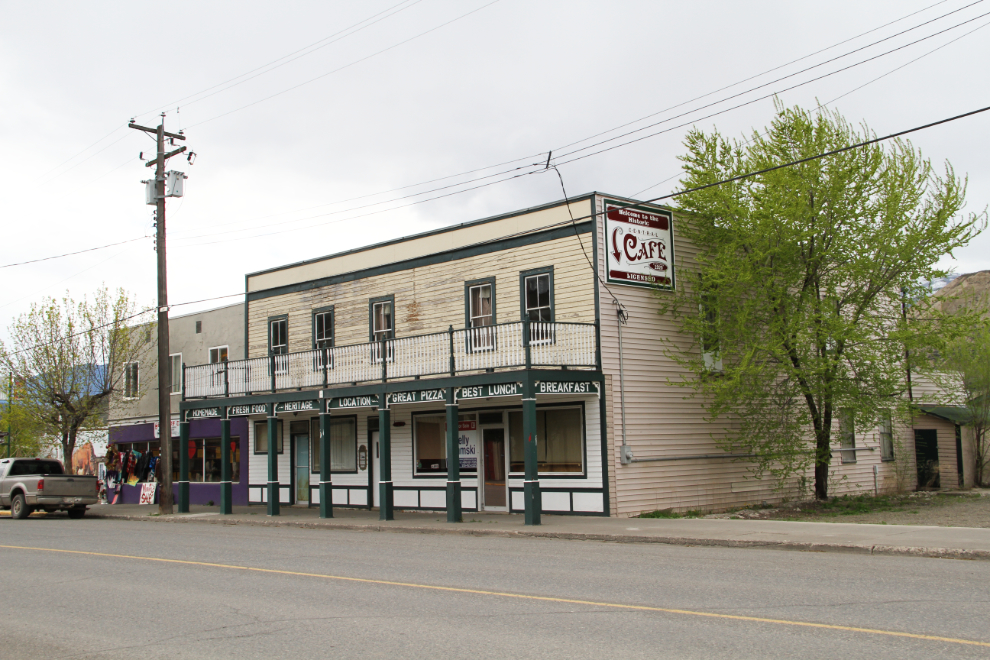
The Seeds of Time collectibles/antique store is also closing.

I don’t know what this patio beside another closed store was.

I don’t know if there’s any connection to this little mall, but in 1913, the residents of Ashcroft sent a delegation to Ottawa and returned with a grant from the Lady Minto Foundation to create a hospital and develop a regional health care service. Doctors and nurses from the Victorian Order of Nurses were the original staff members.

In an empty lot in the centre of Ashcroft, a large safe. A bank or hotel, I expect.
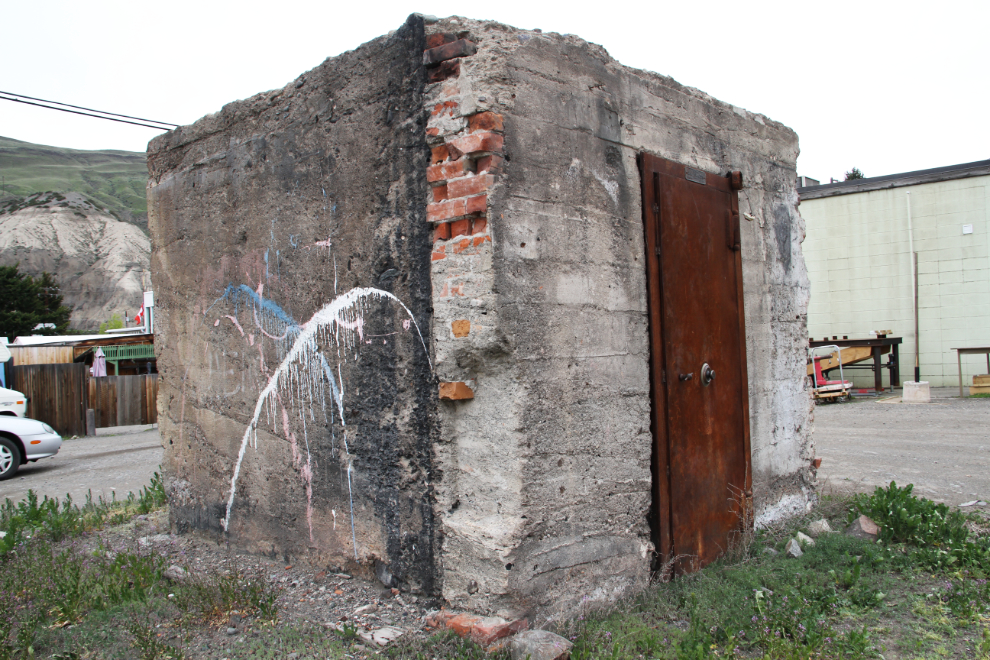
I love the design of the Ashcroft Wellness Studio, which has a couple of mosaics to the right of the door.
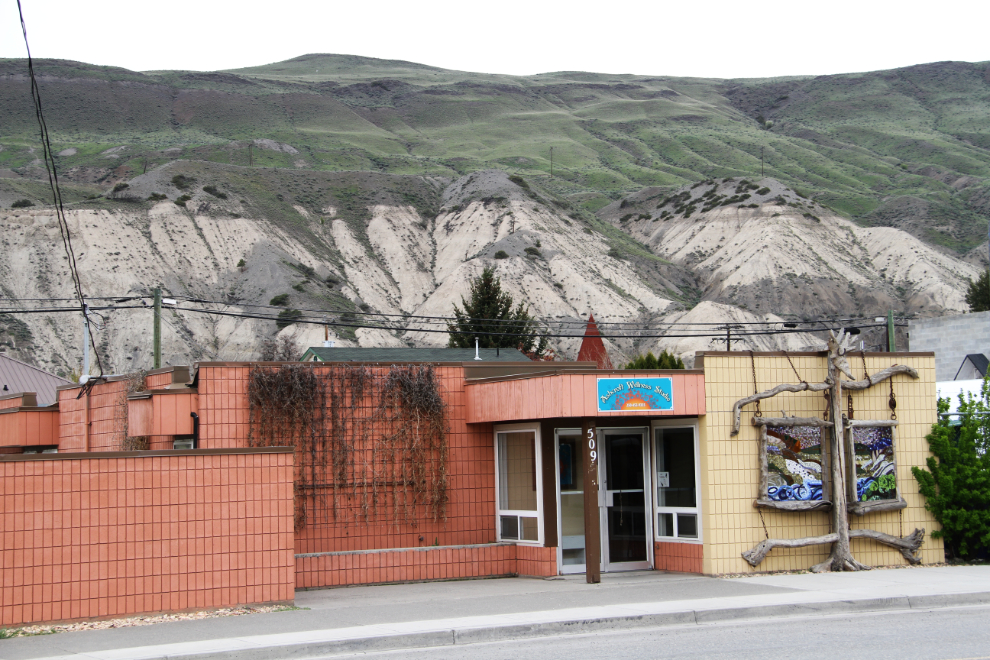
The third thing that I was told that I needed to see was Millennium (Heritage Place) Park, and it too was an excellent suggestion.

Across the street is an auto body shop whose owner has a great sense of humour. Maybe that’s the car that I saw advertised: “Hasn’t run in a few years – bring a chainsaw!” 🙂

At the far end of Heritage Place Park is this old mine truck, a 635-horsepower, 50-ton Wabco Haulpak. It worked at nearby Bethlehem Copper from 1962 until 1976.

Continuing on, this awesome truck behind the body shop prompted a walk back.
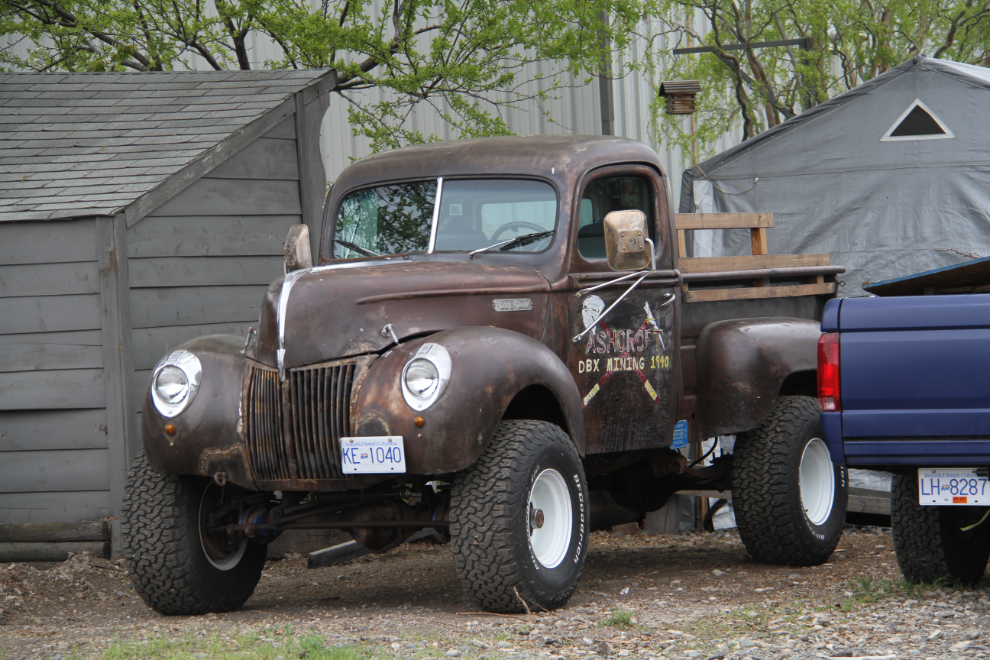
A pleasing design on the current fire hall.

Kitty-corner from the Royal Canadian Legion is the veteran’s memorial. It has no locals’ names on it as is common in small towns.

The Ashcroft Museum, which was closed until the following day, May 1st.

A few minutes before 2:00 pm, I was back on Highway 97, headed back to get the RV.

At 2:00 pm, we dropped back down to Cache Creek.

A few minutes later, I had the Tracker hooked up to the motorhome and we were on our way south again. I had decided to make the lovely 14-site campground on the Thompson River at Gold Pan Provincial Park our overnight stop. It’s only 57 km south of Cache Creek, so that would give me lots of time to take the Tracker out exploring and photographing again.